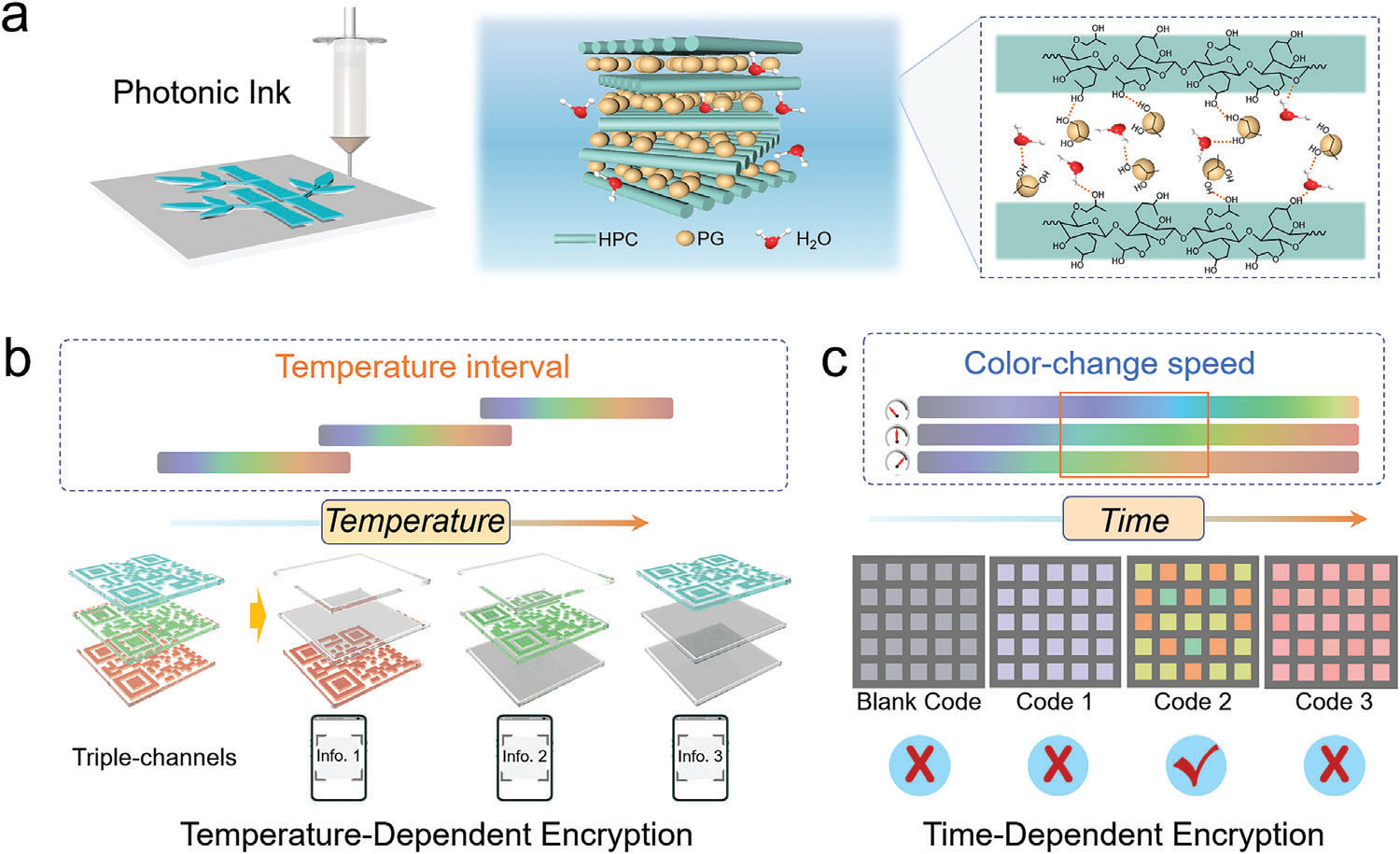Information security is an essential issue for human living, social stability, and even national security. For high-security encryption technologies, two main strategies are: the incorporation of multiple anticounterfeiting materials into a product, and using multiple stimuli as a collaborative key. However, integration of different categorical anticounterfeiting materials generally requires complicated processing and are of high time-consumption, while complex decoding operations may bring critical requirements for decryption devices. Therefore, developing sophisticated but convenient encryption and decryption technologies to combat threats of information leakage is urgently needed but remains a great challenge.
Recently, Prof. Fei Song and co-workers report a synergistically time- and temperature-resolved information coding/decoding solution based on cellulose photonic inks. Complex encrypted information can be stored into multiple channels with dynamic-color patterns, and information decryption is only enabled at appointed temperature and time points. Notably, the ink can be easily processed into quick-response codes and multipixel plates. With high transparency, controllability of response temperature ranges, and color change speeds, advanced 3-D stacking multi-channel coding and Morse coding techniques can be also applied for multi-information storage, complex anti-counterfeiting and information interference. The findings provide scientific foundation for synergistically temperature-and time-resolved information coding and encoding.

This work is published in Advanced Science entitled “Sophisticated yet Convenient Information Encryption/Decryption Based on Synergistically Time-/Temperature-Resolved Photonic Inks”. Prof. Fei Song is the corresponding author, and Dong Li is the first author. This work was supported by the National Natural Science Foundation of China and Science, Technology Fund for Distinguish Young Scholars of Sichuan Province, State Key Laboratory of Polymer Materials Engineering, and the Fundamental Research Funds for the Central Universities.
Link: https:// https://doi.org/10.1002/advs.202206290
